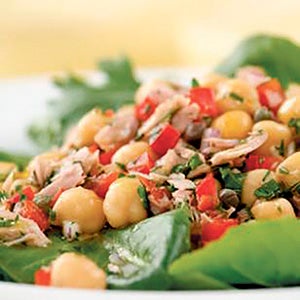What it means to be heart healthy
Published 7:21 am Sunday, January 31, 2016
So you’re ready to make some heart-healthy changes in your life, especially with your diet and exercise? Perhaps you’re wondering: Will it really make a difference? Do you really need to make those changes if you’re taking medicine for your heart?
The answer is yes. Your lifestyle does matter — a lot.
Results from three groundbreaking studies examining the impact of lifestyle modifications underscore the power of healthy habits and the importance of focusing on total health to reduce the risk of cardiovascular diseases, according to the American Heart Association.
The studies were recognized among the top research advances in 2015.
Here are some things the studies found:
It’s not enough to just cut saturated fats
How patients replace calories when cutting saturated fats makes a big difference when it comes to lowering coronary heart disease risk, according to a study published in October 2015 in the Journal of the American College of Cardiology. It is a significant finding, researchers said, because most people eat more low-quality carbohydrates when cutting saturated fats.
According to the study, replacing 5 percent of calories from saturated facts with an equivalent amount of polyunsaturated fats or monounsaturated fats lowered heart disease risk by 25 percent and 15 percent, respectively. Replacing with whole grains lowered risk by 9 percent. Substituting refined starches or sugars didn’t increase or decrease risk.
Bigger increases in exercise reduce heart failure
Guidelines recommend at least 30 minutes most days of the week. But to reduce the risk of heart failure, people should double or quadruple that, according to a study published in October 2015 in the AHA’s journal Circulation.
In the study, those who exercised two and four times more than the minimum recommended amount lowered their risk of developing heart failure by 19 percent and 35 percent, respectively.
“This shows that the minimum recommended is good, but much more physical activity is better to really have a potential impact to prevent heart failure,” said Marie-France Hivert, M.D., an assistant professor in the department of population medicine at Harvard Medical School and chair of AHA’s physical activity committee.
Encouragement and support of a healthy lifestyle is so important
The study, published in September 2015 in the Journal of the American Medical Association, used a low-cost automated program to send four text messages a week that offered advice and support to make lifestyle changes.
After six months, levels of bad LDL cholesterol, systolic blood pressure and body mass index were lower among patients receiving the text messages. Text-message recipients also exercised more and were more likely to have quit smoking.
In general, the American Heart Association recommends these strategies to help protect your heart:
•Eat a wide variety of nutritious foods in the right amounts from all the food groups.
•Include lots of different kinds of vegetables and fruits, especially deeply colored varieties.
•Include plenty of fiber-rich, whole-grain foods.
•Choose fat-free, 1 percent and low-fat dairy products.
•Eat fish, preferably fish containing omega-3 fatty acids (for example, salmon, trout and tuna) at least twice a week.
•Select lean meats and skinless poultry.
•Include legumes, nuts and seeds.
•Limit high-calorie, low nutrient foods.
•Reduce the amount of saturated fat, trans fat and cholesterol you eat.
•Limit sugar-sweetened beverages and fruit drinks, and save high-calorie snacks and desserts for occasional treats.
•Keep sodium to a minimum by limiting prepackaged foods and choosing unprocessed foods and products that are the lowest sodium available and using little or no salt when preparing foods.
•If you drink alcohol, drink in moderation.
Try this great recipe to ease your way into eating heart-healthy and starting your new lifestyle today.

Mediterranean Tuna Antipasto Salad
Mediterranean Tuna Antipasto Salad
Serves 4
All you need
•1 (15 to 19 oz) can beans, such as chickpeas, black-eyed peas or kidney beans, rinsed
•2 (5 to 6 oz each) cans water-packed chunk light tuna, drained and flaked
•1 large red bell pepper, finely diced
•1/2 cup finely chopped red onion
•1/2 cup chopped fresh parsley, divided
•4 tsp capers, rinsed
•1 1/2 tsp finely chopped fresh rosemary
•1/2 cup lemon juice, divided
•4 tbsp extra-virgin olive oil, divided
•Freshly ground pepper, to taste
•1/4 tsp salt
•8 cups mixed salad greens
All you do
1. Combine beans, tuna, bell pepper, onion, parsley, capers, rosemary, 1/4 cup lemon juice and 2 tablespoons oil in a medium bowl. Season with pepper.
2. Combine the remaining 1/4 cup lemon juice, 2 tablespoons oil and salt in a large bowl. Add salad greens; toss to coat. Divide the greens among 4 plates. Top each with the tuna salad.
Source: Adapted from Eating Well magazine.
This information is not intended as medical advice. Please consult a medical professional for individual advice.


